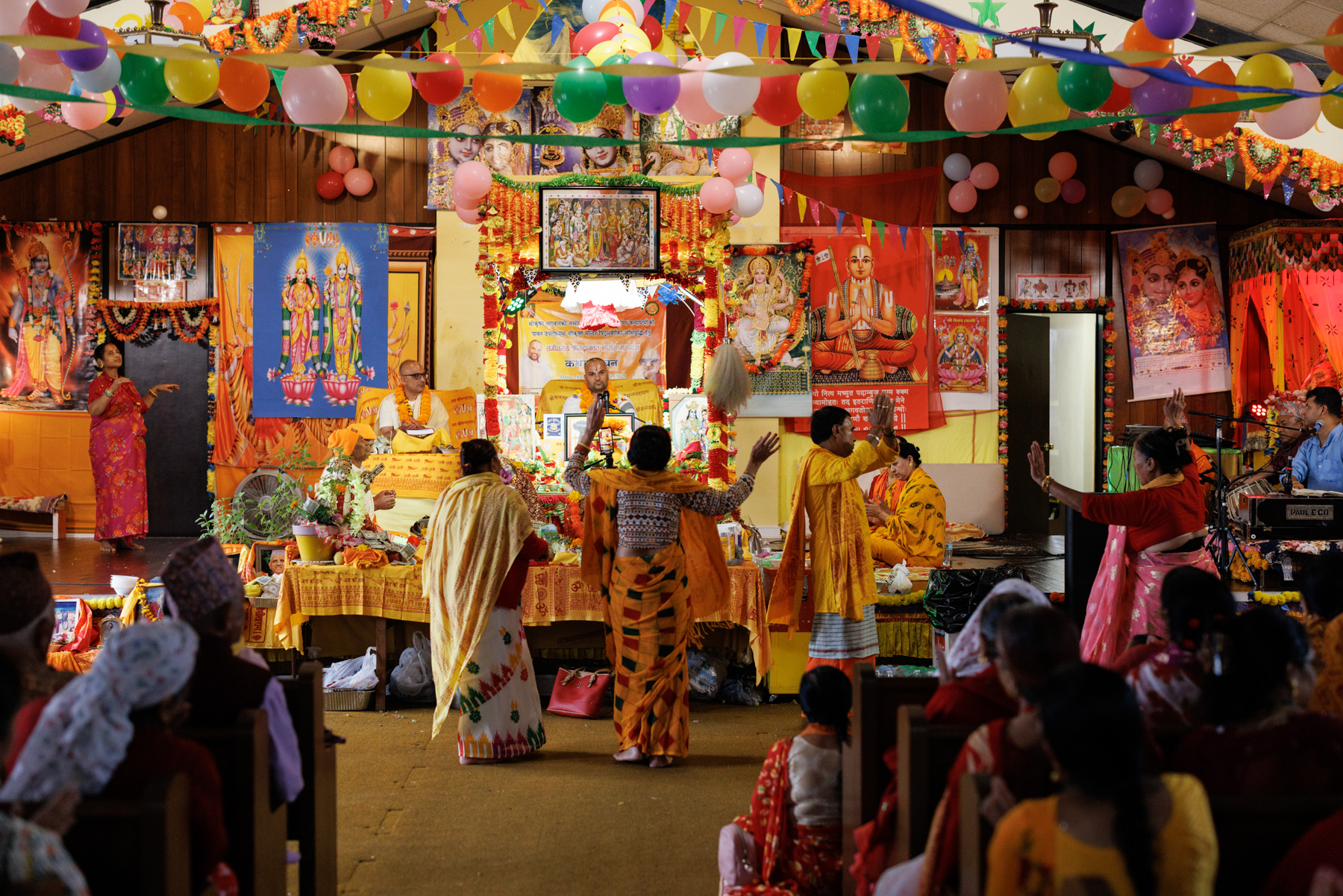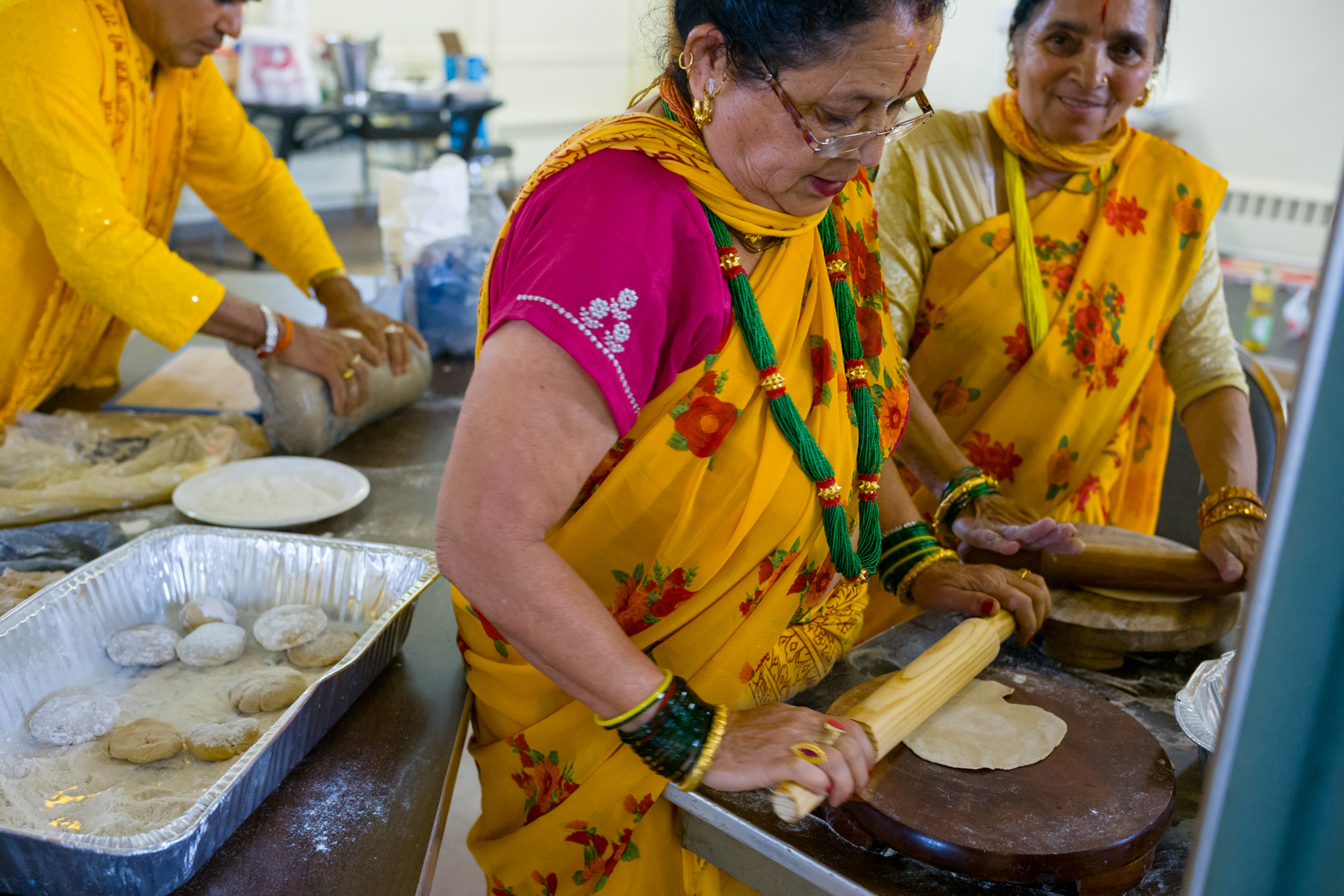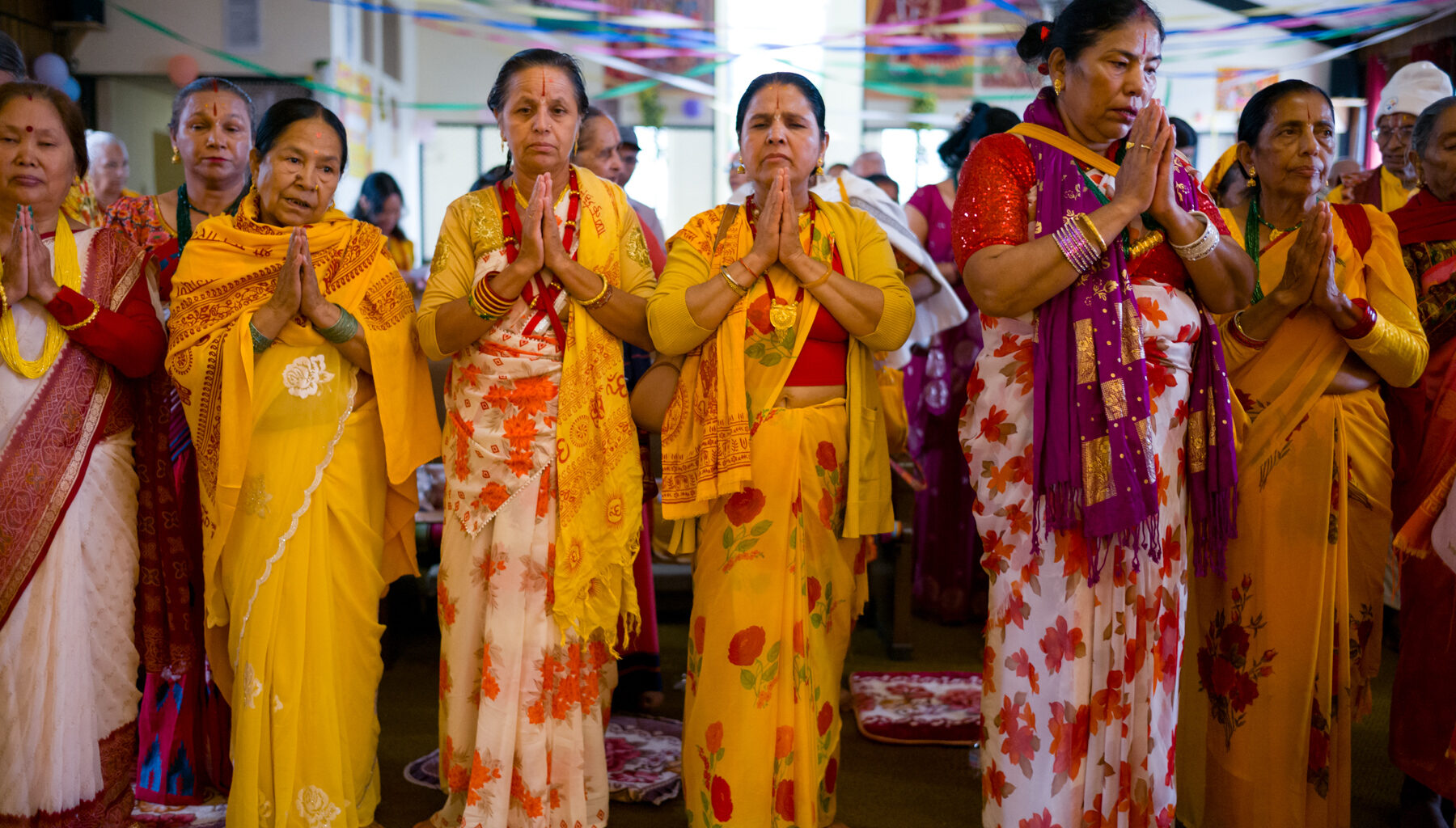Editor’s note: This story was first published in a Pittsburgh’s Public Source neighborhood zine. Look for our printed zines now in Brookline, Carrick, Overbrook and Oakland.
Hinduism has always been important to Tek Nepal, president of Carrick’s Shree Krishna Temple of Pittsburgh.
“My parents taught me, you have to go to temple for peace, your mental peace, for healthy life, to forgive you [for] bad things,” Nepal said. “I think everyone here is probably the same.”
Since 2020, Shree Krishna Temple has provided Hindu worship and community to Pittsburgh’s Nepali refugee population from Bhutan. In the 1990s, ethnically Nepali people, often Hindu, fled Bhutan to escape persecution and ethnic cleansing. Thousands came to the Greater Pittsburgh area, initially settling in places such as Carrick, Baldwin, Whitehall and Castle Shannon.
 Music and dancing at Shree Krishna Temple of Pittsburgh, in Carrick, on Aug. 14. (Photo by Quinn Glabicki/Pittsburgh’s Public Source)
Music and dancing at Shree Krishna Temple of Pittsburgh, in Carrick, on Aug. 14. (Photo by Quinn Glabicki/Pittsburgh’s Public Source)
Shree Krishna serves about 10,000 people, Nepal estimated. The worshipers are mostly from Pittsburgh but come from other cities such as Harrisburg and Akron, Ohio.
Worshipers travel to the temple because they want to connect with South Pittsburgh’s sizable Hindu population, Nepal said, and because the temple does not favor a given sect of the Hindu religion.
“People typically come to be in front of the God and pray for peace, harmony, good health, and that’s all,” Nepal said.
In mid-August, the temple hosted a weeklong event called Shree Madbhagwat Saptah Gyan Maha Yagya, in which large groups of worshipers fill the temple every day. Across two floors, in separate rooms, worshipers prepared and ate food, danced and sang, and engaged in quiet prayer. The temple puts on this event several times a year.
 Congregants prepare puri at Shree Krishna Temple of Pittsburgh on Aug. 14. (Photo by Quinn Glabicki/Pittsburgh’s Public Source)
Congregants prepare puri at Shree Krishna Temple of Pittsburgh on Aug. 14. (Photo by Quinn Glabicki/Pittsburgh’s Public Source)
During a normal week, the temple has as many as 10 visitors a day, Nepal said. People come and go as they please, depending on their own work schedules or other obligations. The temple only offers religious services, not community programming.
“Whatever we do here is done ritually,” Nepal said.
The temple has helped Nepali refugees find their footing in Pittsburgh, Nepal said.
“There was a time they had a difficult life [in Pittsburgh], because they didn’t know where to go, they had no languages, language barrier, you know,” Nepal said. “It was a tough time for them. But now, it’s easier for people. They have places to go and worship, like they used to do back in Nepal. It’s better now.”
Matt Petras is an independent writer and adjunct professor based in Pittsburgh. He can be reached at matt456p@gmail.com.
This story was fact-checked by Emma Folts.
Your gift will keep stories like this coming.
Have you learned something new today? Consider supporting our work with a donation.
We take pride in serving our community by delivering accurate, timely, and impactful journalism without paywalls, but with rising costs for the resources needed to produce our top-quality journalism, every reader contribution matters. It takes a lot of resources to produce this work, from compensating our staff, to the technology that brings it to you, to fact-checking every line, and much more.
Your donation to our nonprofit newsroom helps ensure that everyone in Allegheny County can stay informed about the decisions and events that impact their lives. Thank you for your support!
Republish This Story
Republish our articles for free, online or in print, under a Creative Commons license.


